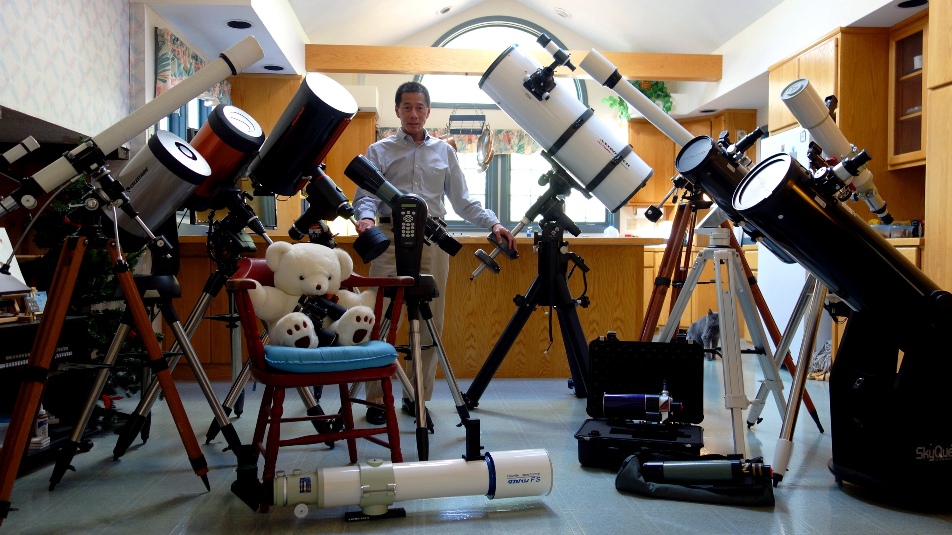Buying your first telescope

Are you interested in exploring the mysteries of the universe by observing the Milky Way Galaxy? If so, then buying a telescope for galaxy viewing is the best investment you can make. But, with so many options available, purchasing a telescope for galaxy viewing can be a daunting task for beginners. In this article, we will guide you through the process of buying a telescope that fits your needs and budget, and help you achieve the best experience of viewing the Milky Way Galaxy.
Understanding Telescopes: Types and Terms
Before buying a telescope, it is essential to understand the types of telescopes and their components. Telescopes come in three basic types: refractor, reflector, and catadioptric. Each type has its advantages and disadvantages, and selecting one depends on your needs and budget. The essential components of a telescope are the aperture, focal length, and eyepiece. The aperture is the diameter of the telescope’s primary lens or mirror, and it determines the amount of light it can gather. The focal length is the distance between the primary lens or mirror and the eyepiece, and it affects the magnification of the telescope.
Choosing the Right Telescope
When buying a telescope, consider the following factors:
1. Aperture
The aperture is the most critical factor in determining the telescope’s performance. A larger aperture gathers more light and provides a better view of faint objects. We recommend buying a telescope with an aperture of at least 70mm to observe the Milky Way Galaxy.
2. Focal Length and Magnification
The focal length determines the magnification of the telescope, and it affects the field of view. A longer focal length provides a narrower field of view and higher magnification. However, higher magnification does not necessarily mean a better view. We recommend buying a telescope with a focal length of 600mm to 1000mm for beginners.
3. Mount and Stability
The mount is essential for the stability of the telescope, and it affects the ease of use. A sturdy mount is necessary for accurate pointing and tracking of the Milky Way Galaxy. We recommend buying a telescope with a sturdy equatorial or altazimuth mount.
4. Portability
Consider the portability of the telescope if you plan to travel with it. A smaller telescope is more portable but may sacrifice some performance.
5. Budget
Telescopes can range from a few hundred to thousands of dollars. Consider your budget and what features are essential for your needs.
Recommended Telescopes for Viewing the Milky Way Galaxy
Based on the above factors, we recommend the following telescopes for beginners to view the Milky Way Galaxy:
1. Celestron PowerSeeker 80EQ Telescope
The Celestron PowerSeeker 80EQ is a refractor telescope with an aperture of 80mm and a focal length of 900mm. It comes with an equatorial mount that provides stable tracking and a smooth adjustment. The telescope is portable and easy to use, making it an excellent choice for beginners.
2. Orion SkyScanner 100mm Tabletop Reflector Telescope
The Orion SkyScanner 100mm is a tabletop reflector telescope with an aperture of 100mm and a focal length of 400mm. It comes with a stable tabletop mount that is easy to use and portable. The telescope provides a wide field of view, making it ideal for observing the Milky Way Galaxy.
3. Meade Instruments Infinity 102mm AZ Refractor Telescope
The Meade Instruments Infinity 102mm is a refractor telescope with an aperture of 102mm and a focal length of 600mm. It comes with an altazimuth mount that provides smooth and easy adjustments for tracking and pointing. The telescope is portable and easy to set up, making it a great option for beginners.
4. Sky-Watcher Classic 150 Dobsonian Telescope
The Sky-Watcher Classic 150 Dobsonian is a reflector telescope with an aperture of 150mm and a focal length of 1200mm. It comes with a sturdy and easy-to-use Dobsonian mount, which provides smooth tracking and pointing. The telescope is more massive than the other options, but it provides excellent performance for viewing the Milky Way Galaxy.
Accessories for Observing the Milky Way Galaxy
To enhance your viewing experience, consider adding the following accessories to your telescope:
1. Barlow Lens
A Barlow lens increases the magnification of your eyepiece, providing a closer view of the Milky Way Galaxy.
2. Moon Filter
A Moon filter reduces the brightness of the Moon, making it easier to observe the Milky Way Galaxy on a clear night.
3. Red Light Flashlight
A red light flashlight helps preserve your night vision and makes it easier to navigate around your telescope in the dark.
Conclusion
Buying a telescope for viewing the Milky Way Galaxy can be overwhelming, but by considering the factors mentioned above, you can make an informed decision. The Celestron PowerSeeker 80EQ, Orion SkyScanner 100mm, Meade Instruments Infinity 102mm, and Sky-Watcher Classic 150 Dobsonian are all great options for beginners. By adding accessories like a Barlow lens, Moon filter, and red light flashlight, you can enhance your viewing experience and make the most of your telescope.
